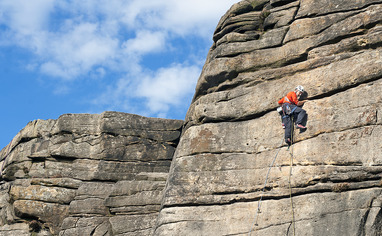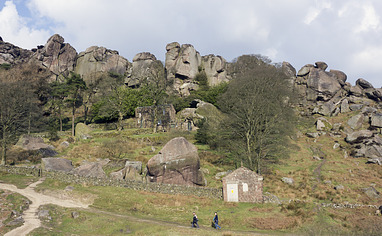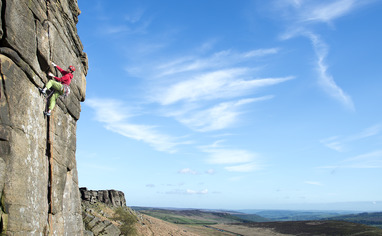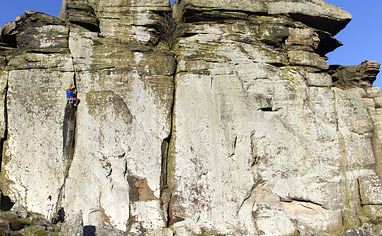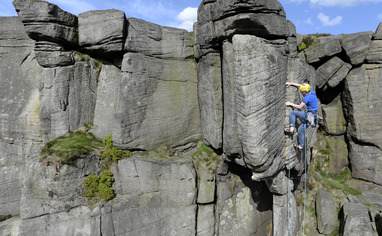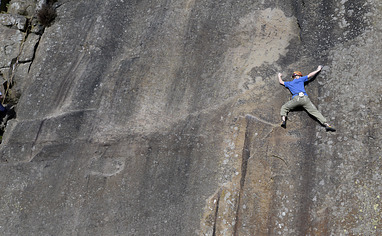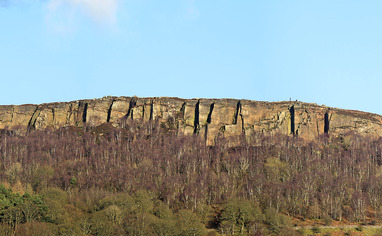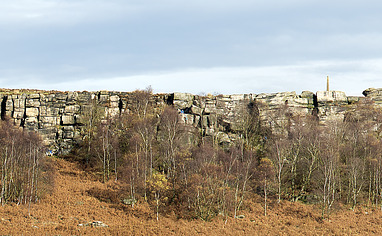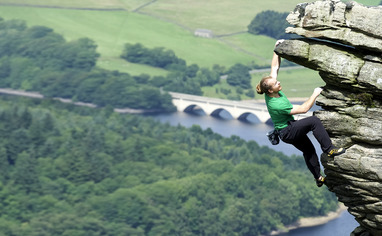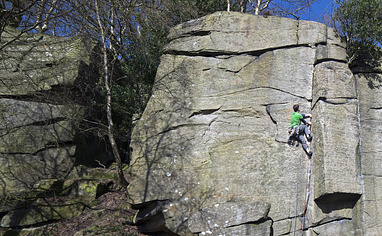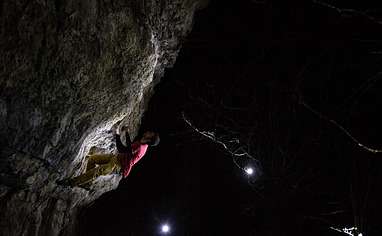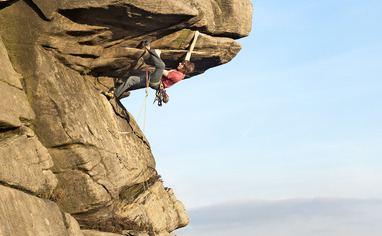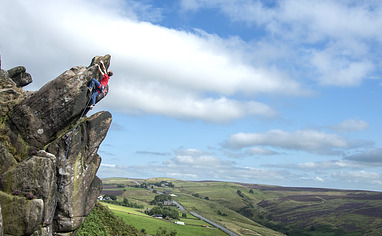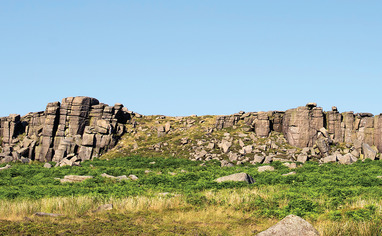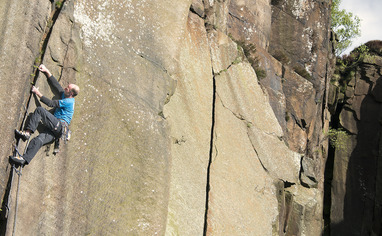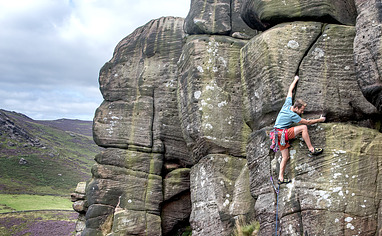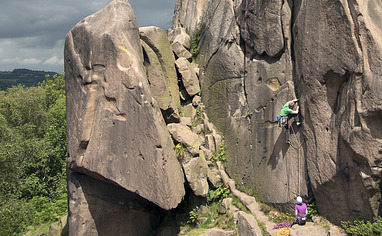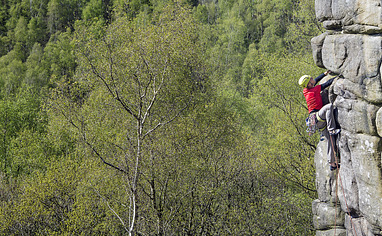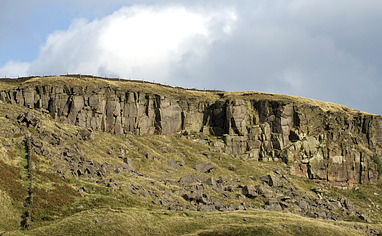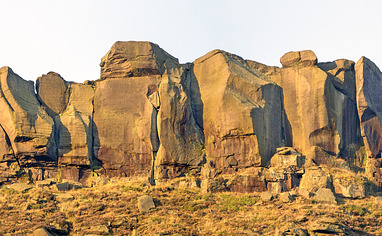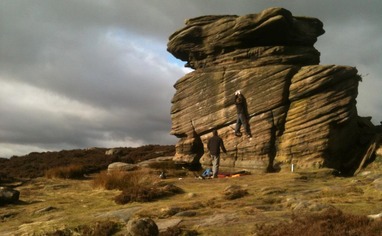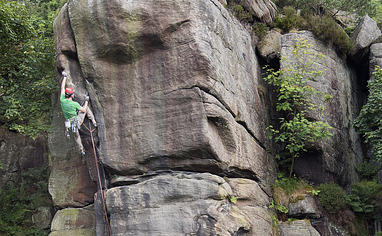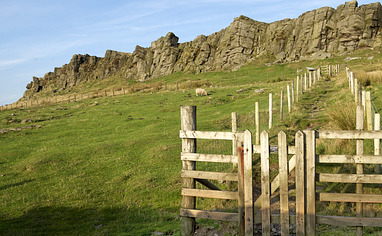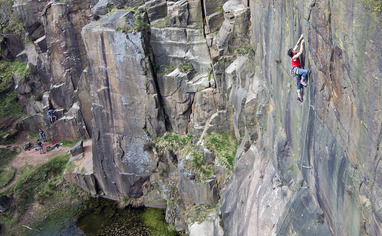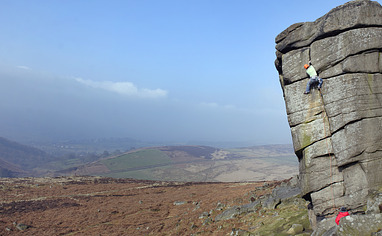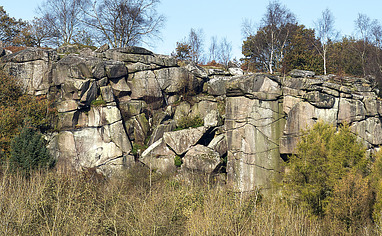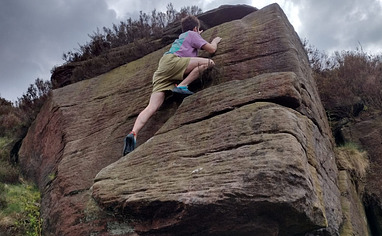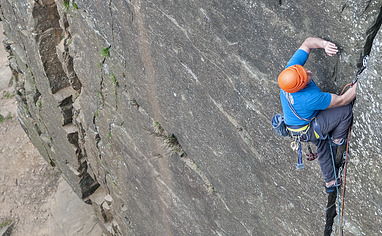Rock Climbing in Peak District, UK
The Peak District is an upland area of central and northern England covering much of the county of Derbyshire, but also including parts of Cheshire, Greater Manchester, Staffordshire and Yorkshire. Closely bordered by the major cities of Sheffield and Manchester, and with Birmingham, Nottingham and Leeds only slightly further away, its leafy dales and heather-clad moors attract millions of visitors each year. This is an area of outstanding natural beauty offering magnificent views, but for those who wish to do more than simply look, it is also an outdoor activist’s paradise. In particular its many Gritstone edges and tors, weathered by wind and rain over the ages into spectacular and unique formations, offer some of the finest rock climbing in the country. Though rather diminutive in height, Peak Gritstone has always held a special place in the hearts and minds of climbers. Indeed, enthusiasts have been scaling these crags since the late 19th century and though generally a far safer activity now than it was in those early days, the physical aspects of climbing on Grit remain essentially the same: an honest tussle with a worthy opponent. Gritstone is a hard, coarse-grained rock, once used extensively to make millstones and grindstones for milling flour, pulping wood and sharpening blades. Having been superseded by other materials in those industries, the roughness of Gritstone is now the sole preserve and delight of the rock climber. Peak Gritstone edges rarely rise beyond 25m in height and are usually somewhat lower. What the climbs lack in size, however, they more than make up for in content, often providing intense physical and mental experiences, pushing both body and mind to the limit. Constant erosion by wind and rain has created a surface with few of the positive edges and pockets commonly found on many other rock types. Instead, rounded vertical cracks and horizontal breaks, or smooth and featureless slabs make up the language of Gritstone. Climbers coming from other types of rock, and especially those whose previous experience is limited to indoor walls, will probably find a period of adjustment is necessary before feeling comfortable on Gritstone. Providing visitors adopt a reasonably flexible approach, climbing on Peak Gritstone is a year-round activity with no particular ‘season’. That said, the Peak District suffers a slightly higher rainfall than the UK average, and with much of the area lying above 1,000 feet (300m) strong winds can be a problem on the more exposed edges at certain times of the year, although a boon — drying wet rock after sudden spring showers or dispersing clouds of midges on balmy summer evenings — at others. Climbers wishing to try the harder routes will relish the cold, clear days of mid-winter, when the friction between skin, rubber and rock is at its greatest. ➡️ Things to note about climbing gear and routes in Peak District Potential visitors should take into account that climbing on Peak Gritstone is done without in-situ bolts — it’s totally ‘traditional’, requiring the placement of protection by the leader. This could range from micro-wires right up to the biggest camming devices on the market, depending on the route. On what are relatively small cliffs, it is easy to underestimate how serious the climbing here can be: true, with modern equipment, many routes can be completely ‘stitched up’ i.e. nuts and/or cams placed so close together that, barring incompetence or human error, any leader falls should be relatively risk-free, but a significant number of routes on Gritstone remain as badly protected today as they’ve always been, and must effectively be soloed. Furthermore, this level of seriousness isn’t just reserved for the harder climbs, it can be encountered throughout the grades. The default grading system on 27 Crags is French sport and all routes shown in our Peak Gritstone selection display these. However, we also give the UK dual-grade system equivalent, which often acts as an excellent indicator of a route’s seriousness and works particularly well on Grit in this respect. The key lies in the correlation between a route’s adjectival grade (VS, HVS, etc.) and its technical grade (4b, 4c, etc.). Thus a route with a relatively low adjectival grade compared to its technical rating is invariably less serious than a route with a relatively high adjectival grade compared to the same technical rating. For example, the adjacent climbs of Sunset Crack and Sunset Slab at Froggatt Edge both have a technical rating of UK 4b, but while the former route, a crack, is very well protected and hence has an adjectival grade of only Hard Severe (HS), the latter is an extremely bold slab climb with a high crux offering no useful protection whatsoever, and thus warrants an adjectival grade of Hard Very Severe (HVS), fully two grades higher than its near neighbour. Moving further up the scale, comparing two of the classic UK 5c climbs at Millstone Edge, Knightsbridge (E2 5c) features one short, hard section, well protected by wires, while Edge Lane (E5 5c) is a harrowing lead/solo (particularly if attempted on-sight) with potential for a 10 metre ground-fall from its crux moves. However, the system is not without its anomalies: London Wall, again at Millstone though universally accepted as E5 6a, is a good example. One might expect the E5 adjectival grade to suggest above average levels of boldness for a UK 6a technical rating, but that’s not the case here: the route is well enough protected by most people’s standards. Instead, the high E grade refers to the very sustained nature of the actual climbing (as opposed to just one or two hard moves). In other words, ‘E’ is used for ‘effort' in certain instances. Please also take note of additional comments and symbols in each route’s listing, as these will give useful information about its potential riskiness.
Peak District topos
3706 routes in 28 crags
Photos
108 photos shared by 9 climbers
Travel info
Best season
Climbing possible year-round, best friction in mid-winter
How to get there?
Around 3,5h drive from London, 1-2h drive from Manchester, Leeds and Sheffield
Where to sleep?
Many options in the nearby cities
Other activites
Hiking, MTB, city sightseeing
Get Peak District climbing guide to your smartphone
The most detailed climbing guide from Peak District starting at €2.91 / month.


- 3706 climbing routes with high-quality topo images and detailed descriptions from Peak District
- The subscription also includes access to other 4025 Premium crags around the world
- Find crags and boulders with ease using in-app GPS
- Use topos even when there's no Internet connection
